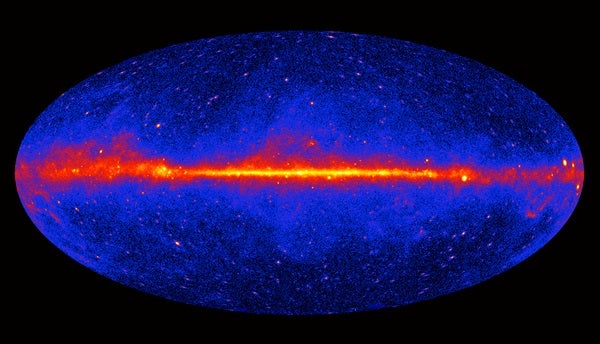NASA’s Fermi Gamma-ray Space Telescope just reached a milestone.
One of the instruments on the Fermi satellite, the Large Area Telescope (LAT), observed its billionth gamma ray on April 12, 2017.
Gamma rays are electromagnetic radiation that can originate from radioactive atomic nuclei or nuclear explosions. They are usually caused by powerful events, such as supernova explosions or particles released from infalling matter surrounding black holes. Information collected about gamma rays can help scientists learn more about supermassive black holes, neutron stars, and even dark matter, as some people think gamma rays can be produced when dark matter particles annihilate each other.
The LAT was created at the Department of Energy’s SLAC National Accelerator Laboratory and has helped detect many different phenomena. Since Fermi’s launch in 2008, the telescope has also discovered more then 200 pulsars, studied exotic objects called microquasars, and has shown thermonuclear explosions on stars emitting gamma rays.
All of the variety of data the LAT has collected on these topics can help scientists learn more about cosmic events and the chemicals that make up universe.










